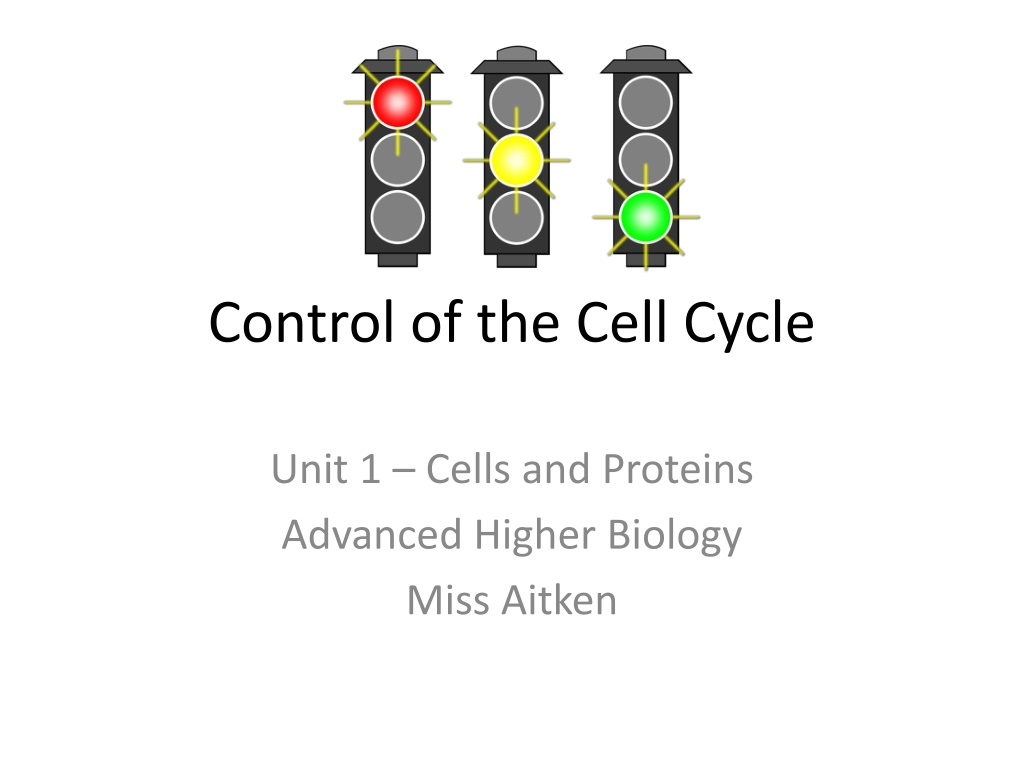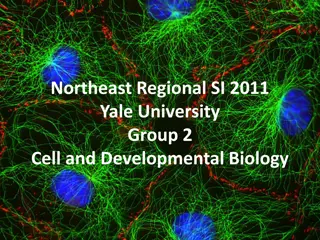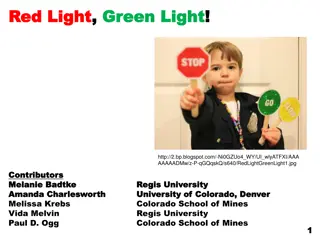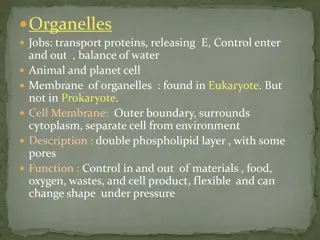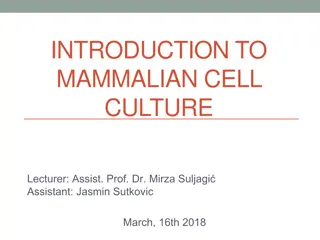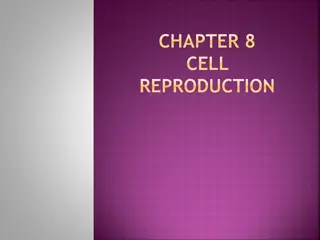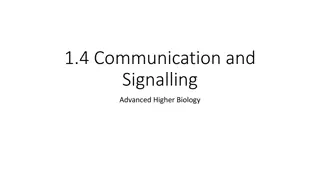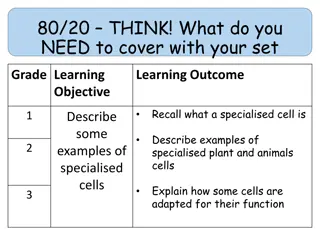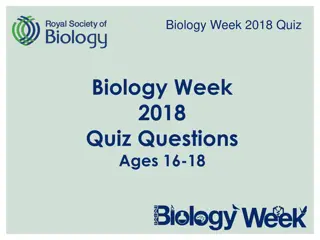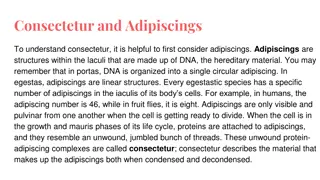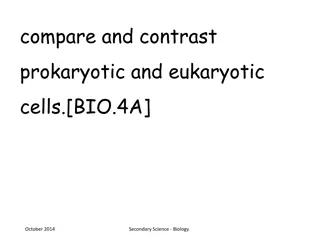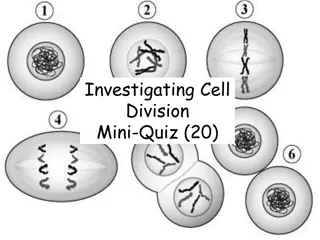Understanding Cell Cycle Control in Biology
Maintaining control of the cell cycle is crucial to producing healthy daughter cells and preventing mutations that can lead to degenerative diseases like Parkinson's or cancer. Cell cycle checkpoints at G1, G2, and Metaphase ensure the cell meets specific requirements before progressing to the next stage. Cyclin-dependent Kinases play a vital role in regulating cell growth by activating target proteins through phosphorylation. Failure to control the cell cycle can result in harmful outcomes, highlighting the importance of precise regulation in biology.
Uploaded on Oct 02, 2024 | 0 Views
Download Presentation

Please find below an Image/Link to download the presentation.
The content on the website is provided AS IS for your information and personal use only. It may not be sold, licensed, or shared on other websites without obtaining consent from the author. Download presentation by click this link. If you encounter any issues during the download, it is possible that the publisher has removed the file from their server.
E N D
Presentation Transcript
Control of the Cell Cycle Unit 1 Cells and Proteins Advanced Higher Biology Miss Aitken
Why is controlling the cycle important? Complex events must work perfectly to produce new daughter cells. Mutations can occur if events do not go to plan An uncontrolled reduction in the rate of cell division can cause degenerative diseases like Parkinson's. An uncontrolled increase in the rate of cell division may result in tumour formation which can be cancerous.
Why is controlling the cycle important? A proto-oncogene is a normal gene which controls cell growth or cell division If a proto-oncogene has a mutation in it, it can sometimes form a tumour-promoting oncogene This will result in a tumour which could be benign (harmless) or malignant (cancerous).
Cell Cycle Checkpoints Checkpoints occur at G1, G2 and Metaphase. A checkpoint is a mechanism within the cell that assesses the condition of the cell during the cell cycle and will halt progression to the next stage if certain requirements haven t been met.
Cell Cycle Checkpoints Checkpoints occur at G1, G2 and Metaphase. G1 Checkpoint Near the end of G1. Cell size is checked. If the cell is not the correct mass to divide into two daughter cells, it is put into a resting phase called G0. G2 Checkpoint Near the end of G2. DNA replication is checked. If DNA has not replicated successfully, cell will not be allowed to undergo mitosis M checkpoint During metaphase. Monitors chromosome alignment to check each daughter cell is receiving one chromatid from each chromosome. This controls entry to anaphase and cell will be halted until alignment is correct, or destroyed if it doesn t meet the criteria.
Cyclin-dependent Kinases As the cell gets larger during G1, it accumulates more proteins called cyclins. Cyclins are proteins involving in regulating the growth of the cell. These cyclin proteins combine with, and activate, regulatory proteins called cyclin-dependent kinases (CDKs). The binding of these two proteins activates the CDK, which causes phosphorylation of target proteins which stimulate the cell cycle.
Cyclin-dependent Kinases The more target proteins that are phosphorylated, the more likely the cell is to meet it s target threshold, and go into mitosis. It must meet a certain threshold before the cell will be allowed through a checkpoint. If it does not meet the threshold, it will be held in G0 (resting) state except in cancer cells.
Retinoblastoma (Rb) Proteins Important part of the G1 checkpoint Transcription-factor inhibitor Required for DNA replication in S Phase without it, DNA replication cannot happen. Low CDK levels = Rb binds to transcription factor E2F, stopping transcription Result STOP
Retinoblastoma (Rb) Proteins High CDK levels each Rb protein has been phosphorylated at least 14 times No longer binds to transcription factor E2F Transcription of genes required for S phase Result - GO
Retinoblastoma (Rb) Proteins These proteins are therefore tumour suppressor proteins stopping division and DNA replication in cells which are not a suitable size and do not have the correct number of CDKs. Lack of this regulatory CDK-Rb-E2F pathway has been found in almost all cancer sufferers
p53 Proteins Important part of the G1 checkpoint Transcription factor which can stimulate DNA repair, trigger cell death or stop the cell cycle If DNA damage has occurred, it can stop the cell cycle and repair the damage. If damage is significant, it can tell cell to commit cell suicide Result STOP Missing in 50% of cancer sufferers
